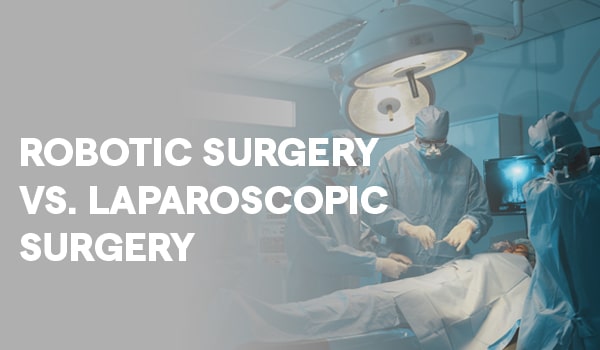
Robotic surgery, often robot-assisted surgery, is a minimally invasive surgical method that utilizes robotic arms. The surgeon uses a console to operate the robotic arms and get a magnified 3D picture of the surgery site. Robotic arms use specialized devices to achieve higher accuracy and range of motion than human hands.
Robotic surgery can be extremely important in the fields of urology, gastrointestinal surgery, gynecology, vascular surgery, general surgery, neurosurgery, orthopedics, cardiac surgery, thoracic surgery, and radiosurgery. Robotic-assisted surgery provides direct and indirect benefits, including faster recovery times and improved surgeon visualization for more precise operation. Your surgeon has a wider range of motion and dexterity.
Benefits of Robotic surgery
Laparoscopic surgery, on the other hand, is a minimally invasive surgery that uses small incisions and a camera-equipped laparoscope to perform surgical procedures. The surgeon inserts specialized instruments through small ports in the patient's body, allowing them to visualize the internal organs on a monitor. The movement of Laparoscopic instruments is restricted as compared to the greater degree of freedom of Robotic instruments. Laparoscopic surgery has been widely used for procedures such as cholecystectomies (gallbladder removal), appendectomies, and hernia repairs.
Benefits of Laparoscopic Surgery
A significant contrast between robotic and laparoscopic surgery lies in the level of control and precision afforded to the surgeon during the procedure. In robotic surgery, the surgeon controls the robotic arms from a console, which provides a magnified, 3D view of the surgical site. This allows for greater agility, range of motion, and precision than laparoscopic surgery, where the surgeon must manipulate the instruments by hand. As a result, robotic surgery may be better suited for complex procedures that require a high level of precision, such as nerve-sparing prostatectomies or delicate gynecological surgeries.
Another difference between robotic and laparoscopic surgery is the learning curve for surgeons. Robotic surgery requires specialized training and certification to operate the robotic system and ongoing practice to maintain proficiency. In contrast, laparoscopic surgery can be learned more quickly and is often more accessible to surgeons who are already familiar with traditional open surgery techniques.
Cost is critical when evaluating the differences between robotic and laparoscopic surgery procedures. Robotic surgery systems are expensive to purchase and maintain, which can drive up the cost of robotic surgery procedures. On the other hand, laparoscopic surgery generally demands less specialized equipment, making it a potentially more cost-effective option for both healthcare providers and patients. However, the increased precision and reduced risk of complications associated with robotic surgery may justify the higher cost for some patients.
Robotic Surgery Hospital in Delhi explains the differences between, robotic surgery and laparoscopic surgery and offers numerous benefits over traditional open surgery. Both techniques result in smaller incisions, reduced pain and scarring, shorter recovery times, and lower infection risk than open surgery. Patients who undergo minimally invasive surgery also tend to experience less blood loss, decreased risk of complications, and shorter hospital stays than those who undergo open surgery.
Sir Ganga Ram Hospital, offers state-of-the-art robotic and laparoscopic surgical options if you are considering minimally invasive surgery. To learn more, book an appointment with Sir Ganga Ram Hospital.